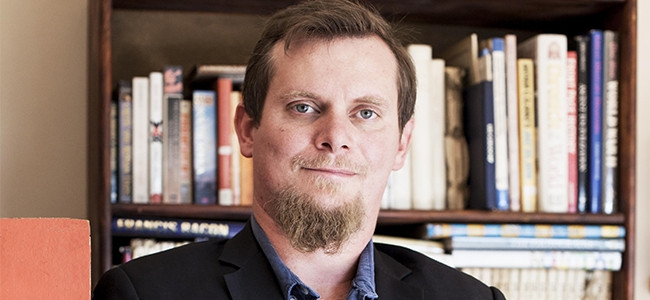
Steve Jobs is a hard, nay, impossible act to follow. This is a problem for Apple. It has to show it can pick up where Jobs stopped. The man shaped the company and even designed its current headquarters. Apple is still his and this is something the company is afraid to lose sight of. At the same time, it really wants to move beyond that, because an Apple that doesn't excel is an Apple that will start to collapse. Nobody wins if they keep holding onto the past.
At its latest event on Tuesday, Apple showed what it thinks will be that break, that post-Jobs play that keeps the winning spirit. The iPhone X, as in 10, is, in the company's words, the device that will define phones for the next decade, just as the iPhone did for the past ten years. Maybe that's why they skipped the 9 and went straight for the big one.
It makes a really strong statement, especially when you look at what was used in the event. It was the first time the world saw the new Steve Jobs Theatre, built in his company's still-mysterious new HQ; it opened with a voice clip of his, and Tim Cook led into the iPhone X unveil with Jobs' famous phrase: "There's more."
This was Apple's post-Steve watershed moment.
Other than still kinda being Jobs' company, Apple is also at a crossroads: it is at the top of its game, still dominates its market and has as loved a brand as you can hope for. It's at least somewhat familiar to where BlackBerry was back in its prime, right before the iPhone came roaring past.
Apple is there now and even though it is not likely to experience BlackBerry's notorious collapse, it's not used to not winning. An Apple not at the top is like a Tiger Woods who can't get to the course. It can't afford to be dethroned, not in such a sensitive transition period. It needs a winner.
The iPhone X is meant to be that winner, but it's a rather superficial attempt. It looks incredibly slick, but that's not really a functional improvement - not until this buttonless approach becomes the norm and UX designers have the commercial freedom to explore whole new interfaces. Augmented reality is really cool, but clearly still a gimmick. Who wants to run around a table while holding their phone? And as much as animated talking emojis are far more awesome than I'd ever like to admit, facial recognition is not going to change the world overnight.
iPhone 8 is the flagship
Initially, this looked like a dud to me. Apple made a big play, leveraging Steve and the iPhone legacy, but delivered something unremarkable. Yet on second thought, there is something else going on here...
Other than the Win-or-Die syndrome and Jobs' ghost, Apple has a third problem: it is not seen as iterative. Each product must make a tangible step forward. Even in the years when Apple didn't make huge announcements, it still made many substantial ones. A new iOS version is an event because you really get new stuff out of it, more so than many of the shifts between Android versions. When you are Apple, you can't drop the ball.
When you are Apple, you can't drop the ball
But how can you innovate if you can't be seen to fail? This is Apple's biggest conundrum. I suspect what we saw now is its answer.
Apart from the iPhone X, it also announced the iPhone 8. That is actually its flagship: it is priced as such and it makes a lot of improvements over the iPhone 7. That is the phone most Apple owners will likely upgrade to, even though they will all covet the more expensive X.
This exclusivity means two things: the X will cater to a smaller audience, and the X can get away with being superficial at the start. If I read the situation correctly, the X is Apple testing a new design and phone approach through the most elite of its customers. It will likely tweak and reshape the phone considerably more than what Apple users are used to, but exclusivity will give it that swinging room.
Meanwhile the iPhone 8 keeps the family business going. This, I presume, is why the 9 was kept aside, to also launch a flagship next year. Thus by 2019, the X bloodline will have been refined and tweaked enough to become the heir.
It would be wrong to judge the X with the same criteria as the rest of Apple's iPhone business. This looks to be a cunning play, at a time when Apple really needs a winning strategy. It's a bluff, placing a young X on the throne while the king's hand, the 8, keeps the empire going. Doing so could solve all three of Apple's problems, providing its culture is ready for this.
Anything might happen. Maybe the new headquarters are actually awful and ruins productivity. But the X could be Apple turning a corner, although not how we might think. It's not the benchmark for the next decade of devices. But it could be a strategy to buy time, a little licence to fail and a step away from the Jobsian gospel of all-or-nothing.
* James Francis is a freelance writer whose work has appeared in several local and international publications.
Share